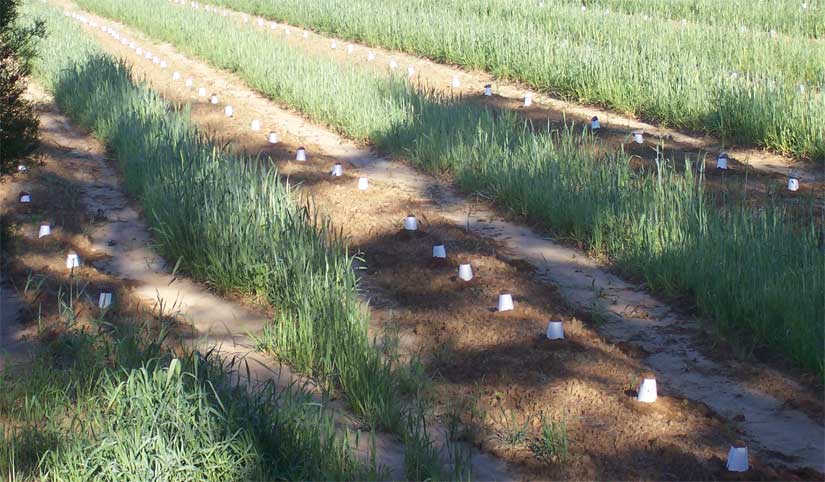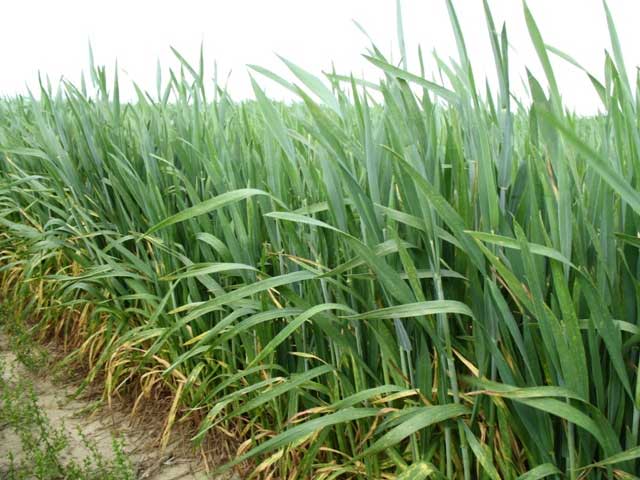Double Trouble: Rain And Cold Costly For Farmers
April 13, 2009
Excess rain and flooding was the story for everyone in North Escambia in late March and early April, but for area farmers, the impact may be on their pocketbook. Cloudy days, rainy weather, and now frosts and cold daytime temperatures have kept farmers from having less than an ideal start to the 2009 growing season.
Traditionally, the time to plant corn is late March and early April. Some farmers managed to get the seed planted in the cool ground, but soggy conditions have either delayed emergence, washed the seed away or rotted the seed. What has germinated has been patchy, and uniform stands are needed for producing a profitable crop. Many farmers have to re-plant, a pricey investment because of seed costs. Nitrogen fertilizer that has washed away with the 15-23 inches of rain is another expense that will be hard to swallow.
What about the wheat and oats that have been in the field and growing relatively well prior to the rains? Ponding water in fields is an enemy for healthy wheat plants. When you drive by a wheat field and see a huge yellow-brown patch where there was standing water, you can bet that there will not be harvestable wheat in that area.
Wheat roots are unable to tolerate wet conditions for any period of time. After one day of standing water, plants will start to show a decline. After three days, the plants will generally not recover. Even the plants that were not in standing water but in relatively soggy conditions can show signs of increased soil-borne diseases. Moisture on the leaves can encourage foliar diseases at a time when wheat needs to be as healthy as possible to make energy to put into the grain production. Farmers weren’t able to get into fields to make fungicide or insecticide treatments to their field because they would’ve been bogged down or the rain would wash the products away.
Finally, the soil hasn’t been able to warm up — a big problem for those who rely upon warm soil temperatures to help seeds germinate. The lack of sunshine, rainy days, cold fronts, and now frosts have really presented challenges to farmers. Escambia county producers grow some very tasty watermelon, but that crop will be delayed in many instances.
James Earl Hall, a watermelon and vegetable grower in Oak Grove, said that he’s already had to replant his melon crop several times because of the inclement weather. Eli Miller — blueberry, sweet corn, and watermelon producer — was so concerned about his seeds that had germinated that he set out to cover the young and tender plants with white Styrofoam cups on Monday afternoon. He’s hoping to have a crop ready for mid-June through the Fourth of July.
Wheat producers know that their crop is most sensitive to freeze injury during reproductive growth, which begins with pollination during late boot or heading stages. Temperatures that are only slightly below freezing can severely injure wheat at these stages and greatly reduce grain yields. No one will know the exact extent of damage to wheat until harvest.
Submitted by Libbie Johnson, Escambia County Extension University of Florida IFAS for NorthEscambia.com.
Pictured top: Eli Miller used Styrofoam cups to protect his young watermelon plants during the recent cold. Pictured below: An Escambia County wheat field; wheat is unable to tolerate extremely wet conditions. Submitted photos for NorthEscambia.com.





Comments